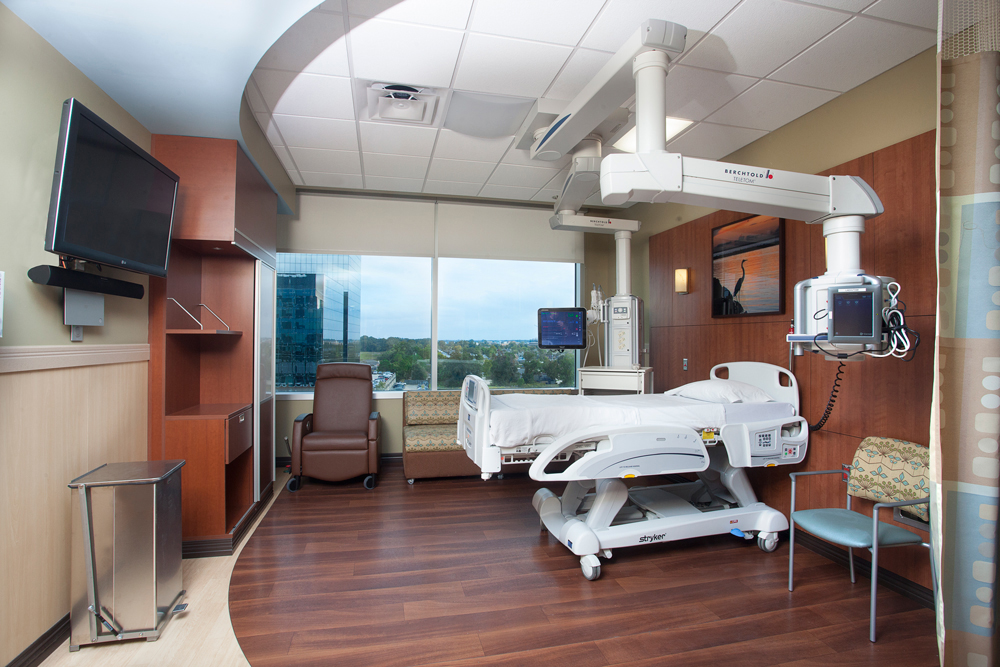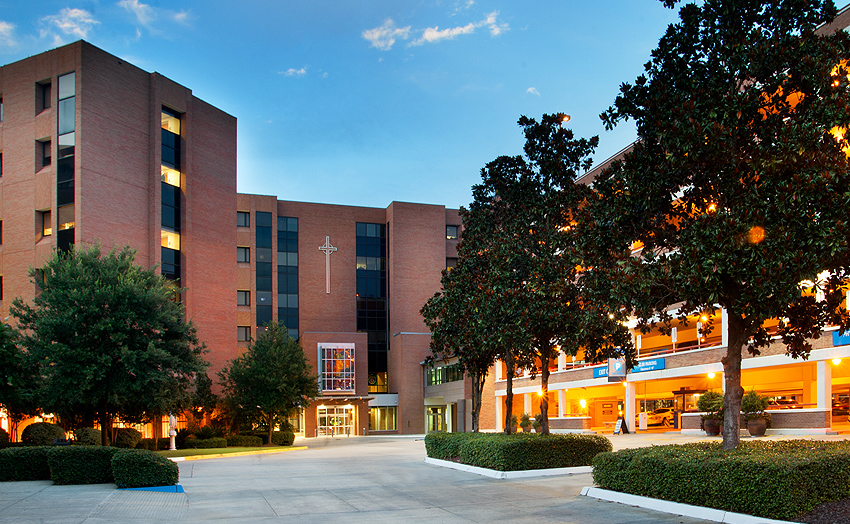Critical Care
Our Critical Care Units
Heart and Vascular Critical Care
Heart & Vascular Institute - 3rd Floor
(225) 764-3721
Visiting Hours: 10 a.m. - 10 p.m.

The Heart and Vascular Critical Care Unit (HVCU) provides around-the-clock care to patients diagnosed with cardiac or vascular conditions that require intensive care. The unit is staffed by a multidisciplinary team of health care professionals who work collaboratively to provide high-quality care for patients suffering from heart and vascular conditions. The universal design facilitates all levels of treatment, keeping patients in one location during their stay for faster healing, with a higher level of comfort for everyone, including families. Because the unit is part of Our Lady of the Lake’s Heart & Vascular Institute, patients in the HVCU have an enhanced continuum of care and access to world-class cardiovascular services and expertise.
Medical Intensive Care
Heart & Vascular Institute - 6th Floor
(225) 764-6720
Visiting Hours: 10 - 11 a.m., 1 - 2 p.m., 5 - 6 p.m., 9 - 10 p.m.
The Medical Intensive Care Unit (MICU) serves critically ill patients with a wide variety of medical conditions. The unit cares for patients who are in critical condition or whose condition necessitates specialized nursing and technology. The MICU is staffed by attending physicians who are Board Certified in critical care and provide 24/7 coverage with assistance from Fellows and residents. MICU nurses have received advanced training in critical care nursing, and many have received additional degrees and certifications.
Neurological Critical Care
Heart & Vascular Institute – 5th Floor
(225) 374-5780
Visiting Hours: 10 - 11 a.m., 1 - 2 p.m., 5 - 6 p.m., 9 - 10 p.m.
The Neurologic Critical Care Unit (NCCU) treats patients with severe neurological conditions and injuries such as stroke, brain hemorrhage, aneurysm, brain tumors, complex spine surgery, status epilepticus, brain infections (encephalitis and meningitis), neuromuscular disorders and any catastrophic disorder affecting neurological function.
The NCCU is staffed by a multidisciplinary team of specially trained physicians, nurses, therapists and other professionals working collaboratively to treat patients in a specialized environment. The team is led by Board Certified neurointensivists making treatment decisions with neurosurgeons, neurologists, interventional neuroradiologists and other subspecialists.
Pediatric Intensive Care
Our Lady of the Lake Children’s Hospital
8300 Constantin Boulevard
Baton Rouge, LA 70808
Visiting Hours: 8 a.m. - 8 p.m.
The Pediatric Intensive Care Unit (PICU) at Our Lady of the Lake’s Children’s Hospital is a multidisciplinary unit providing high-quality care to infants, children and teens. The unit is fully staffed with highly specialized pediatric critical care doctors who are available 24 hours a day, seven days a week, 365 days a year. The specially-trained PICU team focuses on the unique challenges of caring for children, and is prepared to care for a wide variety of life-threatening pediatric cases and conditions.
Click here to learn more about critical care at the Children’s Hospital.
Surgical Intensive Care
Heart & Vascular Institute - 5th Floor
(225) 764-5721
Visiting Hours: 10 - 11 a.m., 1 - 2 p.m., 5 - 6 p.m., 9 - 10 p.m.
The Surgical Intensive Care Unit (SICU) cares for critically ill patients who have undergone complex surgical procedures. Patients in the SICU are cared for by a collaborative, multidisciplinary team of health professionals that include Board Certified critical care physicians, nurses and specialists.
Trauma-Neuro Critical Care
Main Hospital - 2nd Floor
(225) 765-8692
Visiting Hours: 10 - 10:30 a.m., 1 - 1:30 p.m., 5 - 5:30 p.m., 9 - 9:30 p.m.
The Trauma-Neuro Critical Care (TNCC) unit works to improve outcomes for patients with trauma, injury or illness of the brain, spine and central nervous system. The TNCC has a specially trained medical team, state-of-the-art brain monitoring, and specialized treatments to minimize immediate or delayed brain damage and maximize each patient’s chance for a full recovery.
Innovations in Critical Care
The intensive care units at Our Lady of the Lake are renowned for their innovation in telemedicine, which allows attending critical care physicians and nurses to monitor and communicate with patients remotely using videoconferencing equipment. The state-of-the-art technology also provides for real-time access to each adult ICU patient’s medical chart and vital signs.
Our Lady of the Lake was the first hospital in Louisiana to use Mobile Virtual Critical Care (MVCC) technology, beginning in 2004. The hospital began providing the same critical care monitoring services to St. Elizabeth Hospital in Gonzales in 2009, and to Woman’s Hospital in 2014.
Award-Winning Design
The intensive care units at Our Lady of the Lake were honored with the 2015 ICU Design Citation Award, recognizing the design as the most innovative and humanitarian in the United States. This prestigious award commended the patient- and family-focused elements of the 60-bed ICU that is part of the hospital’s Heart & Vascular Institute.
The ICU Design Citation Award is co-sponsored by the Society of Critical Care Medicine, the American Association of Critical Care Nurses and the American Institute of Architects Academy on Architecture for Health. It is given each year to an ICU that combines functional design with the humanitarian delivery of critical care through state-of-the-art aesthetic and creative design features.
Our Lady of the Lake designed its ICUs around the belief that the patient’s environment is vital to the healing process. The design emphasizes features for a calm and comfortable environment: natural lighting, noise-reducing corridors and plenty of space for family members. The rooms are spacious, with 10-foot ceilings and large windows that span wall-to-wall. The design incorporates soft earth tones, paintings and accent pieces to create a “home away from home” for patients during the healing process. Safety and quality are also a priority in the design, and why nurse monitoring stations are placed outside each room to provide one-on-one nursing and immediate access to the patient.

